History of Benelli
History of Benelli Motorcycles
Benelli, an iconic Italian motorcycle manufacturer, has forged a strong legacy since its inception in 1911. Known for its exquisite designs and racing excellence, the company's history is filled with ambitious innovations and notable achievements.
This article offers an in-depth look at Benelli Motorcycles' origin, including key milestones that shaped its history.
Origin Story
The year was 1911, and the vision of a single woman in the quaint city of Pesaro, Italy, formed the inception of the Benelli Motorcycle brand. Teresa Boni Benelli, a widow, put all of her family capital into the Benelli Garage, in the hope of creating a steadfast future for her six sons; Giuseppe, Giovanni, Francesco, Filippo, Domenico, and Antonio.
During its early stage, Benelli Garage was not a motorcycle manufacturer. Instead, it was repairing bicycles and motorcycles while also producing spare parts. This avenue honed their mechanical prowess while laying the groundwork for their later venture into the world of motorcycle manufacturing.
Fast forward to 1919, and the Benelli brothers got started on their prototype, initially building a modest two-stroke model featuring a 75cc engine mounted onto a bicycle frame. However, it wasn't until 1921, that they engineered a proper motorcycle after the first attempt failed to meet their expectations.
This first successful model marked the beginning of a new era in Benelli's history, setting a foundation that would lead to sales success and dominance in the racing arena.
Although the company faced hardships through the World War and ownership changes, the spirit of innovation and commitment to quality that was instilled all those years ago in Pesaro continued to guide the brand.
With the Chinese company
Zhejiang Qianjiang Motorcycle Group as the current owner, they continue to uphold the brand's distinguished tradition while steering it toward a future filled with even more impressive feats.
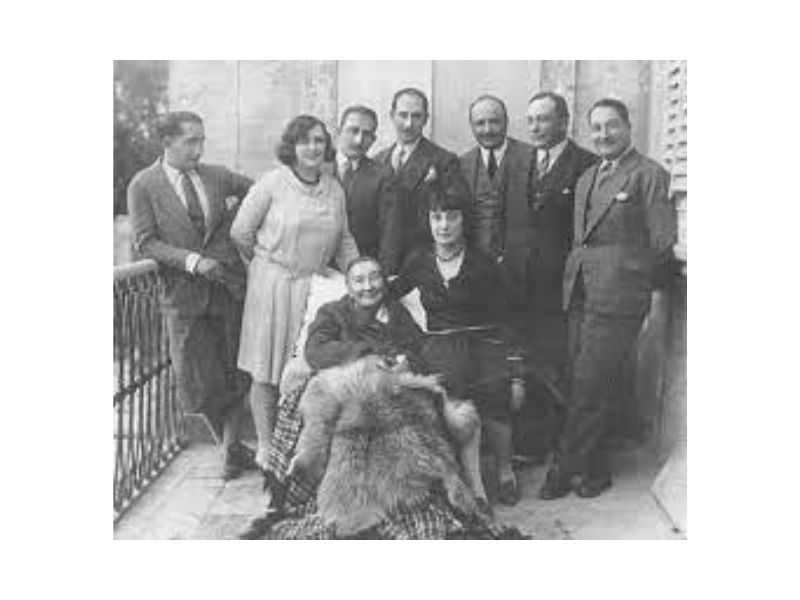
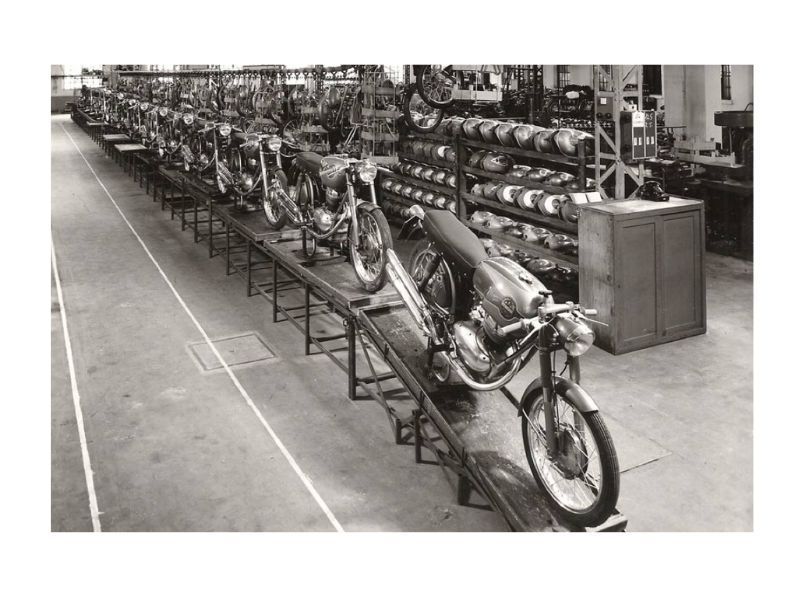
Benelli History
The journey from the Benelli Garage's humble workbenches to becoming a motorcycle powerhouse stretched across trends, eras, and world events. Here's a journey through its rich history.
Early Success
The 1920s witnessed a pivotal event in Benelli's evolution. Fuelled by ambition and the desire to elevate their business beyond repairing and servicing, the Benelli brothers shifted away from utilizing third-party resources and began building their in-house engines.
In 1919, the first complete engine was built, which led to the development of their first motorcycle — the Velomotore — in 1921. This 98cc two-stroke lightweight bike came in two variations — Sport and Touring. A 147cc version was later launched in 1923, which Antonio "Tonino" Benelli (the racer in the family) used to grab multiple racing victories. This made the Benelli name known throughout Europe.
In 1927, the brand introduced what would become its best creation at the time: the 175cc 4-stroke engine. This engine became the turning point for Benelli, allowing them to emerge victorious in various national and international motorcycle races — most notably Tonino's 4 Italian championship wins in five years.
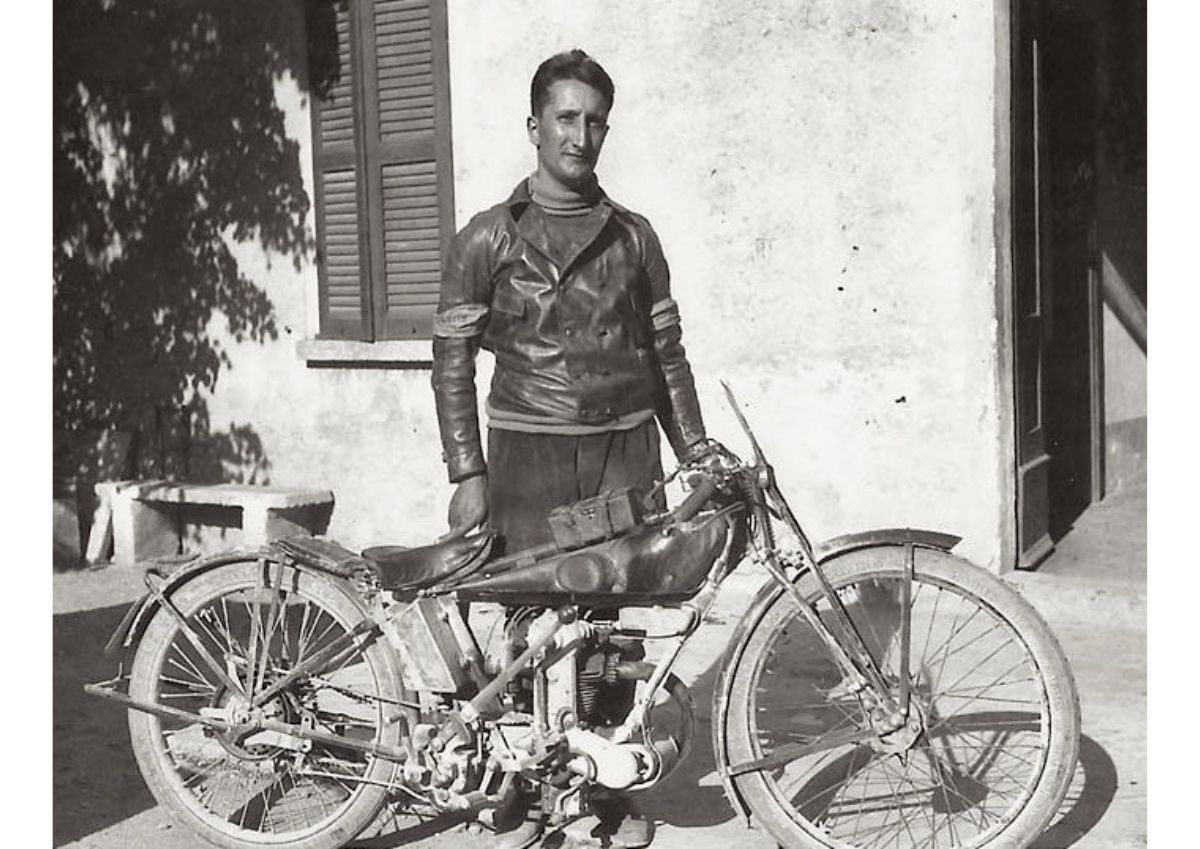
Loss of Tonino Benelli
Unfortunately, 1939 marked a tragic year for the Benelli family when Antonio "Tonino" Benelli, the youngest of the Benelli brothers, lost his life in a road accident. His death was not only a significant loss for the family but also for the company.
World War II and Post-War Recovery
During World War II, like most manufacturing enterprises at the time, Benelli had to steer through hardships and adjust to the circumstances of the war. With the factories taken over for war production and then destroyed by bombing, Benelli faced trying times.
To boost their limited resources, the Benelli team sourced a thousand motorcycles left behind on war fields by military forces, which they repurposed for civilian use.
In addition, the late 1940s saw Giuseppe Benelli leave the company following disagreements with his brothers. He went on to establish Motobi, which produced bikes with 2- and 4-stroke egg-shaped engines.
However, the resilient spirit of the company didn't waver. In the post-war years, Benelli made a triumphant comeback with the model "Letizia," engineered to support the mobility demands of Italians in the recovery period. This was followed by the production of the iconic model "Leoncino" (little lion) from 1950 to 1960.
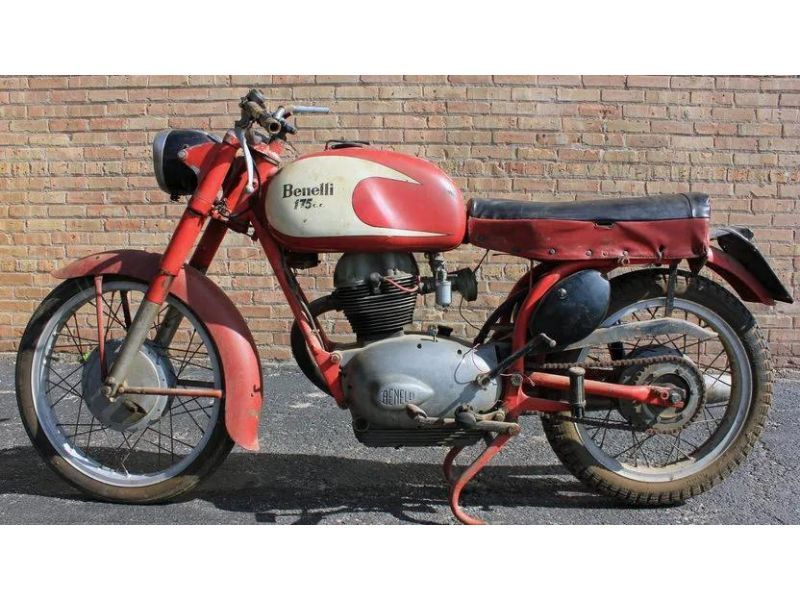
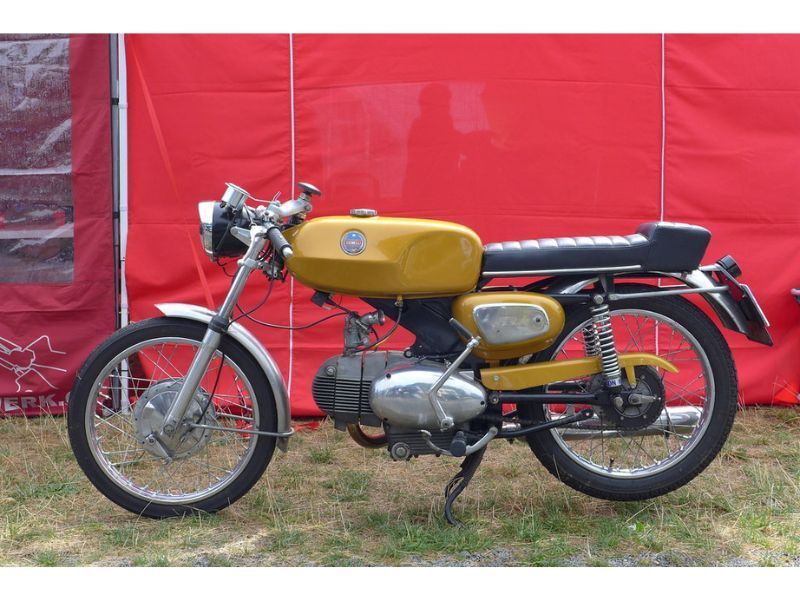
Mergers and Diversification
In the early 1960s, as Benelli celebrated its 50th anniversary, it also sought to merge with Giuseppe Benelli's Motobi.
By 1962, following the merger, the brothers were finally reunited and produced a range of models in the 1960s — from scooters to the Tornado (which was sadly the last of Benelli's original creations).
From the 1970s, the merged entity underwent several ownership changes. From being run by Argentine industrialist Alejandro De Tomaso to going under due to competition from Japan's technically advanced motorcycles, these were tough years for Benelli.
Change of Ownership and Revival
By 1989, the ownership of Benelli was transferred from De Tomaso to Giancarlo Selci, the founder of the Pesaro-based toolmaker Biesse group. This change marked the first time the Benelli brand returned to Italian hands since 1973.
Despite initial success with the production of scooters, it was soon short-lived. This resulted in the production of motorcycles being suspended and the brand was acquired by Andrea Merloni in 1995. The revival was characterized by the launch of scooters like the '491', and motorcycles like the Tornado 900 Tre sportbike.
While the revamped Benelli showed promising progress, it wasn't enough to offset the heavy expenditure incurred for the production of the Tornado — and operations ceased once again.
Current Ownership
In 2005, the ownership baton was handed over to a motor group in China. The Qianjiang Group, known for its readiness to invest in the future, acquired Benelli in December of that year.
Under this new ownership, Benelli focused on research and development, creating technologically advanced, high-quality models. This led to the successful launch of the TRK 502 and Leoncino 500 in 2017, marking the global resurgence of the brand. Notably, the TRK 502 quickly became a top seller in the Italian market.
Today, Benelli continues to tread the path of innovation and quality, intertwining its centennial legacy with a vision for the future that promises to be as exhilarating as its illustrious past.
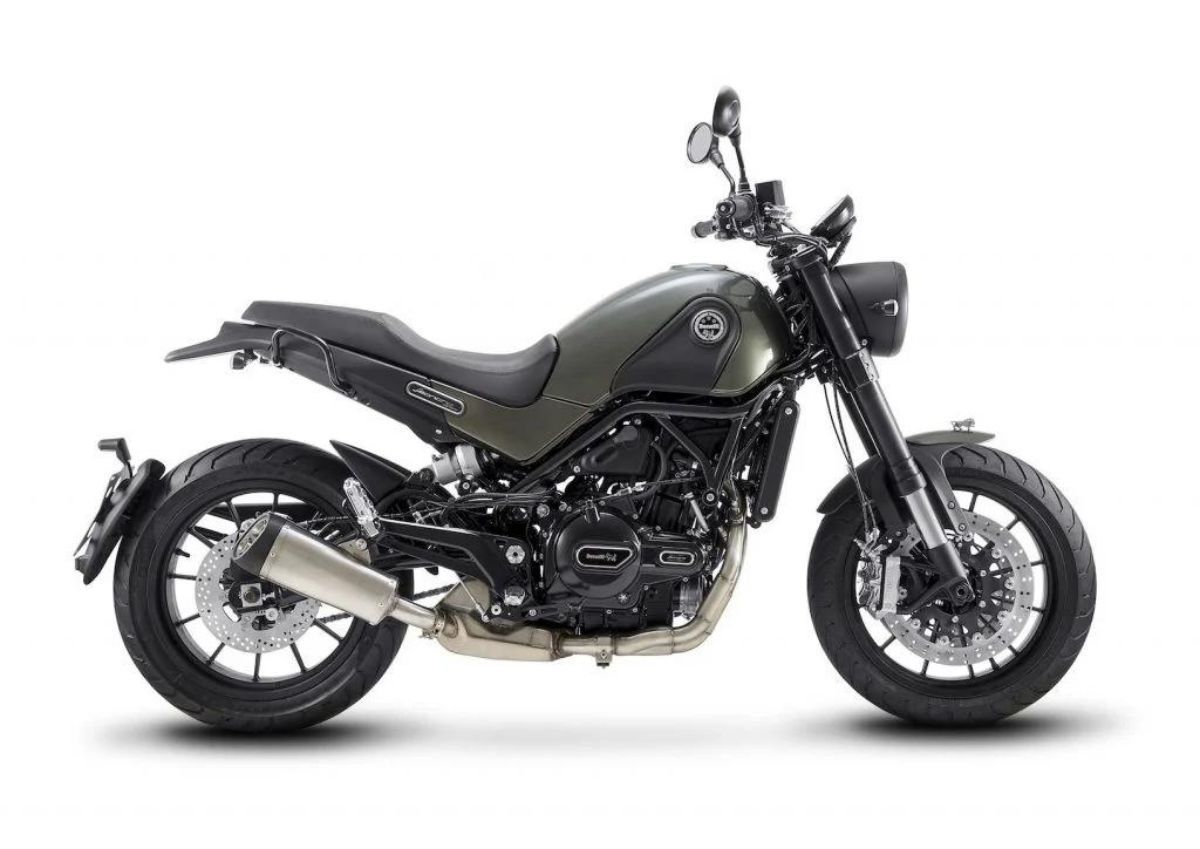
Key Milestones
-
Item Link List Item 1
Here are some of the key milestones in Benelli's history, including the models, events, and achievements that have helped to shape the brand into what it is today.
-
Benelli’s Entry Into MotorcyclingItem Link List Item 2
Benelli's journey into motorcycles began in 1919 with their initial effort, a 75cc two-stroke engine fitted on a bicycle frame. However, this attempt didn't yield the desired outcomes. It was dramatically improved by December 1921 when they launched their first authentic motorcycle termed the "Velomotore". This was a 98cc lightweight two-stroke bike, available in two versions — a Touring and a slightly more powerful Sport model (125cc).
-
The World's First Six-Cylinder Road MotorcycleItem Link List Item 3
1972 saw the birth of the 750 Sei — the world's first road motorcycle with an inline six-cylinder engine. Motorcycle experts praised it for being easy to navigate, having admirable road handling, and superior brakes.
-
InnovationsItem Link List Item 4
1927: The 175cc 4-stroke motor design with 'cascade' distribution and an overhead camshaft emerged in 1927. This innovative solution expedited Benelli's recognition both nationally and globally, becoming the signature feature of the Pesaro firm in no time.
The year 1927 also witnessed the patenting of a groundbreaking invention by Giuseppe Benelli which contributed to its competitive advantage for years. The invention was for managing distribution in combustion engines, kickstarting the commercial and sporting triumph for Benelli that carried on until World War II. The patent was titled "Method to create and stabilize the transmission box for managing the distribution shaft in atop combustion engines.")
The 'Letizia': Under Giovanni's supervision, a set of design guidelines were laid down that emphasized lightness, dependability, and affordability. This resulted in the launch of the 'Letizia', featuring a 98cc, doubly economical two-stroke engine, fitted onto a flexible but essential frame. This model laid the groundwork for the iconic post-war Leoncino motorcycle.
1950-1960: Between 1950 and 1960, around 45,000 units of the 'Leoncino' (the little lion) were produced. The engine options included a 125cc 2-stroke along with a 150 cm³ variant for its tri-wheel model and a 125cc 4-stroke with 'cascade of gears' distribution, which was abandoned due to reliability issues.
1960s
Tornado 650: Benelli rolled out the twin-cylinder Tornado 650, initially in the US, followed by Europe. Despite the different superstructures, its standout feature was the Metisse chassis, endorsed by Steve McQueen. Weighing a solid 480 pounds (220 kg), this model nevertheless gained fame for reliability and high performance. Post-1974, this model was replaced by a series of 'multis' aimed to rival Japanese triple and quad variants.
Mojave 260/360: This model borrowed the Tornado's chassis and superstructures while amplifying the 4-stroke engine to 175 cc. This motorbike, available in both standard and Scrambler configurations, was sold in stores.
Volcano: The Volcano was a low-wheel 'scooter', derived from the Mini Cross, but with an upgraded displacement of 180cc.
1996: This year saw the introduction of several models, one of which was the Velvet, available till 2012, featuring displacements ranging from 125 to 400cc. Also introduced were the 491, K2 (50 and 100cc), and Pepe (50cc) scooters. Out of these, the Pepe emerged as the best-selling scooter of Benelli in the ensuing years.
1999: With the hiring of technician Riccardo Rosa (formerly from Cagiva) in 1999, the company showcased the Tornado Tre, a sportbike with impressive technical upgrades. The Tornado Tre 900 supersport, a 3-cylinder engine model was launched in 2002, that had a cooling radiator positioned under the tail.
2016: Benelli introduced the Leoncino 500 and TRK 500, both produced in Pesaro. Each motorcycle shared the same 500 cc twin-cylinder engine. The Leoncino, available in a roadster and a scrambler version, revived the brand's historical design. The TRK 500 appealed to long-haul tourers, with two models tailored for either road touring or off-road adventures.
-
Racing SuccessItem Link
1927-1931: Tonino Benelli achieved four Italian championship titles in five years, riding a Benelli 175cc 4-stroke motorcycle. He won championships in 1927, 1928, 1930, and 1931 on this model which had a 4-gear driven overhead camshaft.
1948: Benelli recruited motorcycle racer, Dario Ambrosini, after which the Benelli brothers decided to continue with motorcycle manufacturing. Ambrosini's exceptional racing skills eventually led to his victory in the 250cc World Championship in 1950.
Still, in the late 1940s, motorcycles manufactured by Giuseppe Benelli through Motobi, featuring classic 2- and 4-stroke oval engines of lesser and moderate capacity, experienced substantial sales and achieved more than 1000 race wins during the 1950s and 1960s.
1951-1953: Benelli introduced the 'Leoncino' in 1951, achieving peak sales success in 1953 when racer Tartarini won the inaugural 'Motogiro d'Italia' on a Benelli motorcycle.
1961-1969: In 1962, after the merger of the Benelli and Motobi brands, the period saw the success of racers Provini and Pasolini on 4-cylinder 250cc motorcycles. The company also won a second world title in 1969 with Australian racer Kelvin Carruthers.
-
Best-Selling Motorcycle for 3 Years in a RowItem Link
The TRK model, and in particular the TRK 502, carved a remarkable path on the Italian motorcycling scene for three consecutive years, from 2020 through to 2022. The model was not only popular but also commanded the charts, earning the title of the best-selling model in Italy.
The TRK 502's success can be attributed to its perfect combination of style, performance, and functionality that resonated with Italian motorcycle enthusiasts.
-
Celebrating 110 Years and Its Italian-Chinese SynergyItem Link
The Benelli brand, as one of the world's longest-running motorcycle manufacturers, marked its 110th anniversary in 2021. The successful harmony between the seasoned expertise of its Italian base and the vast economy of scale from its Chinese parent firm has proven advantageous.
By merging the Italian style with the extensive financial capabilities of the Chinese owner, Benelli has managed to produce appealing, cost-effective models.
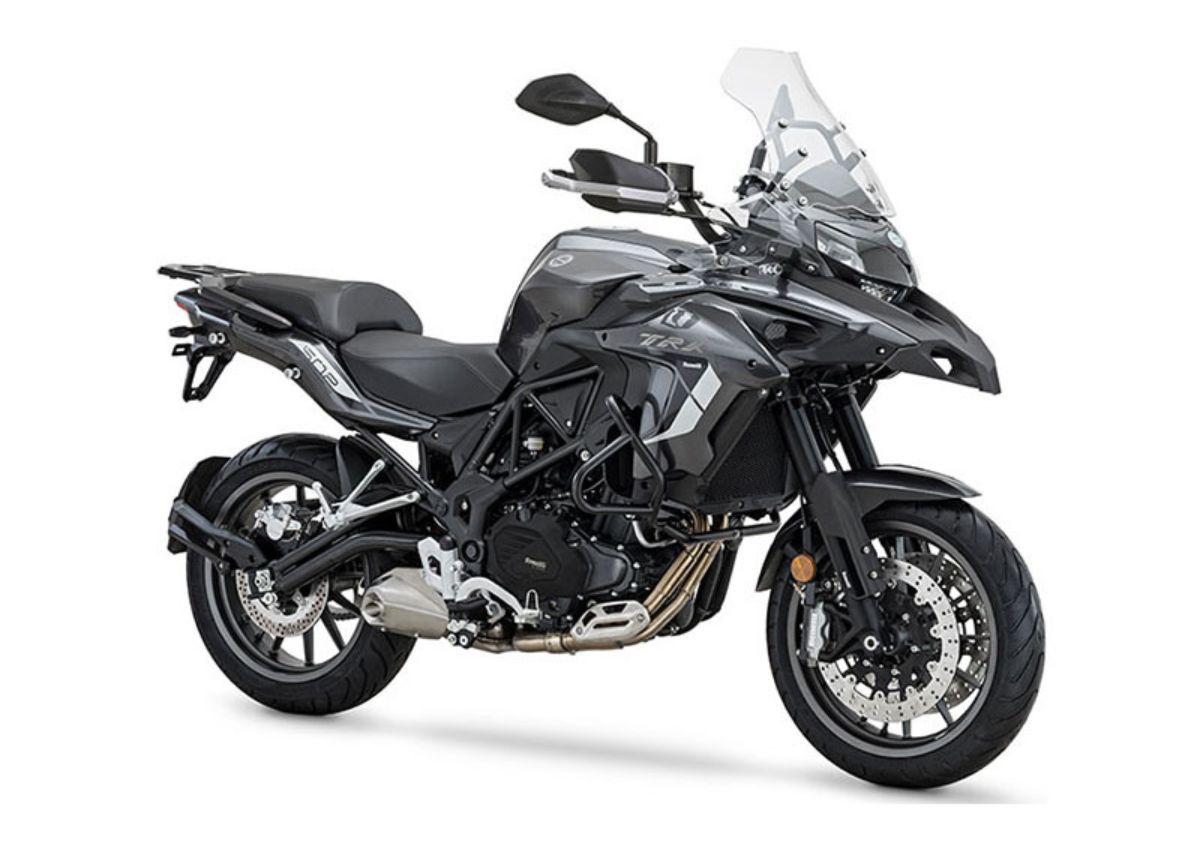
Noteworthy Statistics
Here are some noteworthy statistics of Benelli Motorcycles throughout its history.
- At its peak, in the early years of the brand's history, Benelli boasted a workforce of 800 employees. However, the factory faced massive destruction during the upheavals of World War II.
- Between 1950 and 1960, Benelli produced the iconic Leoncino model, which played an essential role in establishing the company's reputation. As a testament to its popularity, approximately 45,000 units of the Leoncino were produced during that period.
- From 2005 onwards, Benelli became a member of the Qianjiang (QJ) group, which ranks as the largest motorcycle manufacturer in China. QJ's cutting-edge facility in Wenling, generates over 1.2 million vehicles each year, boasting a staff of over 14,000.
- Benelli is one of Italy's oldest and most prominent motorcycle companies, having been around for over a century since it was founded in 1911. Surviving the adversities of global economic recessions, war periods, various ownership transitions, and fluctuating market trends, the company continues to thrive.
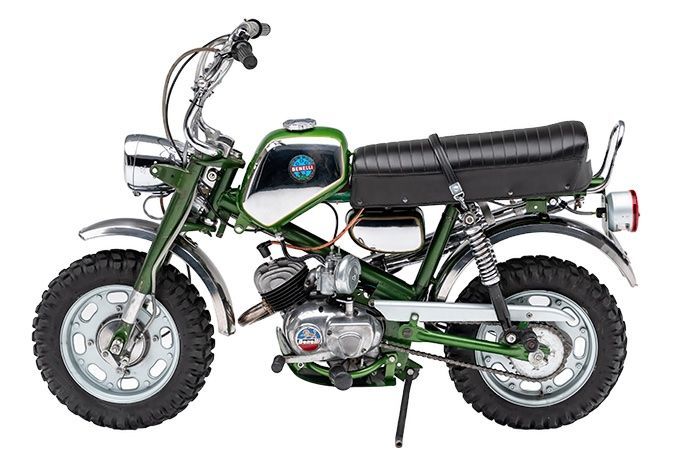
Models by Type
Benelli Motorcycle Company, with its stellar Italian heritage, offers a range of models, fit to cater to various motorcycle enthusiasts. From naked bikes to classic models and scooters, it ensures a perfect choice for everyone.
List of Services
-
NakedItem Link List Item 1
Naked motorcycles, characterized by their minimalistic design and exposed engine, form a significant part of Benelli's offerings.
Models range from entry-level bikes such as the BN 125 and TNT 125, stretching through to larger displacement models like the 180S, 752S, and TNT 600. The 502 Cruiser model (502C) is Benelli’s expressive amalgamation of raw power and aggressive design among naked motorcycles.
-
SportItem Link List Item 2
Benelli's commitment towards innovation and speed is seen in their sports series, most notably the 302R. This sports bike, with its aerodynamic look, powerful engines, and lightweight materials epitomizes the thrill and adrenaline often associated with Benelli motorcycles.
-
TouringItem Link List Item 3
The Touring series offers motorcycles designed for long-distance cruising, with ample storage space, smooth engines, comfortable seating, and robust capabilities. The TRK 251, TRK 502, and TRK 502 X, along with the TNT 600 GT, stand tall in this category, offering both comfort and adventure for touring riders.
-
ClassicItem Link
Benelli's traditional prowess is captured beautifully in the Classic series, particularly with the Imperiale 400ES. This model, with its timeless design and vintage charm, nods to the historical essence of motorcycle culture.
-
ScramblersItem Link
Scrambler motorcycles cater to riders who enjoy an adventurous riding experience, exploring both urban environments and occasional off-road trails. The extensive Leoncino range, including Leoncino 250, Leoncino 500, Leoncino 500 trail, Leoncino 500 Sport, and their 800 cc variants, give riders elements of a classic design and beyond-the-beaten-path adventuring.
-
ScootersItem Link
Benelli also marks its presence in the segment of scooters, offering the sporty RFS 150i, sleek Caffenero 150, and stylish Zafferano 250 models. These scooters offer convenience, maneuverability, and fuel efficiency — a viable and practical option for urban commuters.
BENELLI MOTORCYCLES FAQ
-
Where are Benelli motorcycles made?
Benelli motorcycles are manufactured in Wenling, China, at the Qianjiang group's factory. However, the design and development of Benelli motorcycles are driven by the Benelli R&D center, situated in Pesaro, Italy.
-
What was Benelli's First Motorcycle?
Benelli's first motorcycle was the Velomotore, a 98cc two-stroke lightweight model, produced in 1921. It arrived in two distinct versions: the Touring and an enhanced Sport model with a 125cc engine.
-
What's the relation between Benelli Motorcycles and Benelli Firearms?
The Benelli brand that manufactures motorcycles and the one that produces firearms are two separate entities but originated from the same family in Italy.
After World War II, in 1967, the Benelli brothers diversified their operations and started Benelli Firearms in Urbino, Marche, Italy. The firearms division of Benelli gained global recognition for its innovative designs and use of modern materials.
-
When was Benelli founded?
Benelli was established in 1911 in Pesaro, Italy, initially as a vehicle repair shop. The Benelli Garage was set up by the widowed Teresa Benelli to provide a stable income for her six sons - Giuseppe, Giovanni, Francesco, Filippo, Domenico, and Antonio "Tonino" Benelli.
Building on their mechanical know-how and passion for motorcycles, they moved from providing various vehicle services to assembling their own two-wheeled creations.

